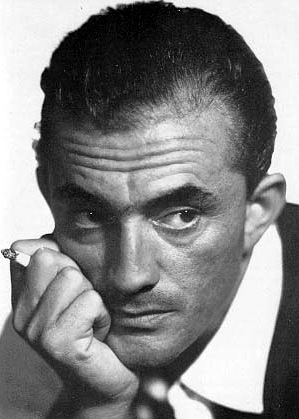Luchino Visconti (Luchino Visconti)

Luchino Visconti began his filmmaking career as an assistant director on Jean Renoir’s Toni (1935) and Partie de campagne (1936), thanks to the intercession of their common friend, Coco Chanel. After a short tour of the United States, where he visited Hollywood, he returned to Italy to be Renoir’s assistant again, this time for La Tosca (1939), a production that was interrupted and later completed by German director Karl Koch because of World War II. Together with Roberto Rossellini, Visconti joined the salotto of Vittorio Mussolini (the son of Benito, who was then the national arbitrator for cinema and other arts). Here he presumably also met Federico Fellini. With Gianni Puccini, Antonio Pietrangeli and Giuseppe De Santis, he wrote the screenplay for his first film as director: Ossessione (Obsession, 1943), the first neorealist movie and an unofficial adaptation of the novel The Postman Always Rings Twice. In 1948, he wrote and directed La terra trema (The Earth Trembles), based on the novel I Malavoglia by Giovanni Verga. In the book by Silvia Iannello, Le immagini e le parole dei Malavoglia, the author selects some passages of the Verga novel, adds original comments and Acitrezza’s photographic images, and devotes a chapter to the origins, remarks and frames taken from the movie. Luchino Visconti continued working throughout the 1950s, although he veered away from the neorealist path with his 1954 film, Senso, shot in colour. Based on the novella by Camillo Boito, it is set in Austrian-occupied Venice in 1866. In this film, Visconti combines realism and romanticism as a way to break away from neorealism. However, as one biographer notes, “Visconti without neorealism is like Lang without expressionism and Eisenstein without formalism”. He describes the film as the “most Viscontian” of all Visconti’s films. Visconti returned to neorealism once more with Rocco e i suoi fratelli (Rocco and His Brothers, 1960), the story of Southern Italians who migrate to Milan hoping to find financial stability. In 1961, he was a member of the jury at the 2nd Moscow International Film Festival.
Throughout the 1960s, Visconti’s films became more personal. Il Gattopardo (The Leopard, 1963), is based on Lampedusa’s novel of the same name about the decline of the Sicilian aristocracy at the time of the Risorgimento. It starred American actor Burt Lancaster in the role of Prince Don Fabrizio. This film was distributed in America and Britain by Twentieth-Century Fox, which deleted important scenes. Visconti repudiated the Twentieth-Century Fox version. It was not until The Damned (1969) that Visconti received a nomination for an Academy Award, for “Best Screenplay”. The film, one of Visconti’s best-known works, concerns a German industrialist’s family which slowly begins to disintegrate during the Nazi consolidation of power in the 30s. Its decadence and lavish beauty are characteristic of Visconti’s aesthetic. Luchino Visconti’s final film was The Innocent (1976), in which he returns to his recurring interest in infidelity and betrayal. Luchino Visconti suffered a stroke in 1972, but continued to smoke heavily. He died in Rome of another stroke at the age of 69. There is a museum dedicated to the director’s work in Ischia.
Born
- November, 02, 1906
- Milan, Italy
Died
- March, 17, 1976
- Rome, Italy
Cause of Death
- stroke
Other
- Buried near his family home on the island of Ischia in the Tyrrhenian Sea



